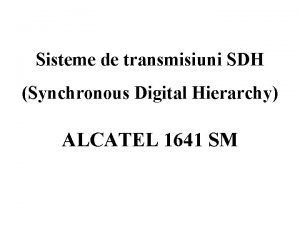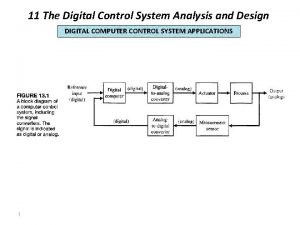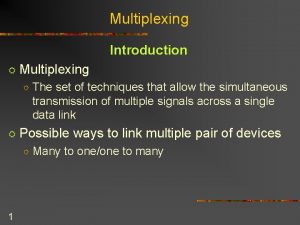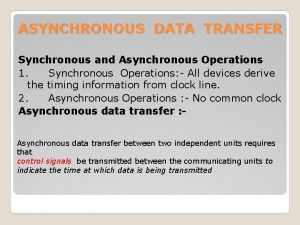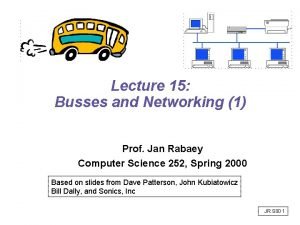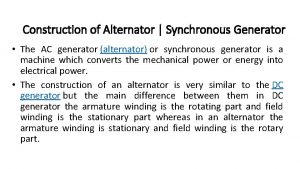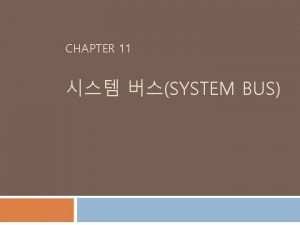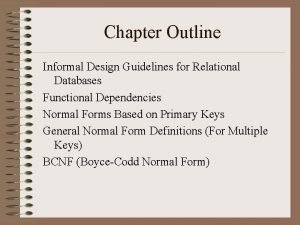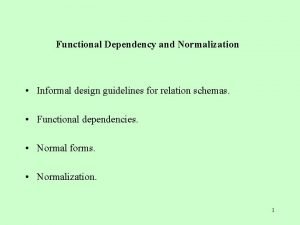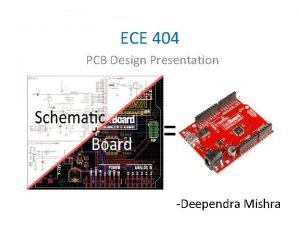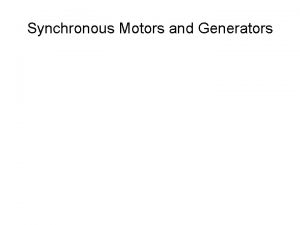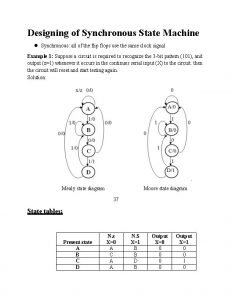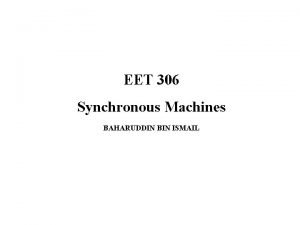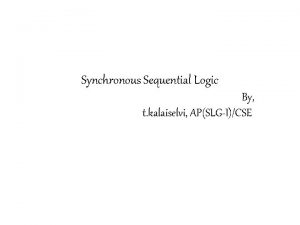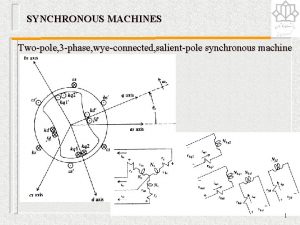Synchronous Digital Design Methodology and Guidelines Digital System






























- Slides: 30

Synchronous Digital Design Methodology and Guidelines Digital System Design

Synchronous Design • All flip-flops clocked by one common clock • Reset only used for initialization • Races and hazards are no problem

Synchronous Design • Three things must be ensured by the designer: – Minimize and determine clock skew – Account for flip-flop setup and hold times – Reliably synchronize asynchronous inputs

Timing Analysis

Clock skew

Example • Determine the maximum frequency of the following circuit with and without skew

Clock Jitter

Clock Gating • Clock gating is done to disable the clock for low power consumption using a clken signal • It is wrong to gate the clock in the following way, instead use a synchronous load (enable) signal

Asynchronous Inputs It is impossible to guarantee setup and hold timing constraints on inputs synchronized with a clock unrelated to the system clock

Asynchronous inputs • Synchronize only in one place


Metastability • Metastability is a phenomenon that may occur if the setup and hold time requirements of the FF are not met, leading in the output settling in an unknown value after unspecified time.

MTBF

Reliable synchronizer design

Multi-cycle synchronizer

Example • Design a synchronizer that synchronizes two inputs async 1 and async 2 generated with a 50 MHz clock CLK 1, to a system with a 33 MHz clock CLK 2 totally independent of CLK 1. Draw appropriate timing diagrams.

Multi-cycle synchronizer with deskewing

Cascaded synchronizer

Example • Design a digital synchronizer to capture valid data according to the following timing diagram

Solution

Synchronizing high-speed data transfers • What happens when the asynchronous inputs are clocked faster than the system clock?

Case study: Ethernet receiver

Byte holding register

SCTRL circuit

Testing Basics Defect: A difference between intended design and actual hardware Error: A wrong output produced through a defect Fault: A defect in a higher abstraction level

Example

Controllability and observability • Controllability: The difficulty of setting a specific signal to 0 or 1 • Observability: The difficulty of reading a specific signal • Electron beam testing is too expensive • Must set signal through primary inputs and observe through primary outputs

Design For Testability (DFT)

Boundary scan • In boundary scan, all flip-flops enter a test mode where they are controllable and observable • After functional verification, normal flipflops are replaced by scan flip-flops • Only D flip-flops must be used • Clocks must not be generated internally

Built-In Self-Test (BIST)
 Synchronous design methodology
Synchronous design methodology Digital design methodology
Digital design methodology What is ssadm methodology
What is ssadm methodology Structured system of communication
Structured system of communication Synchronous digital hierarchy
Synchronous digital hierarchy Domain model specification in iot system design methodology
Domain model specification in iot system design methodology Domain model specification in iot design methodology is *
Domain model specification in iot design methodology is * D flip flop excitation table
D flip flop excitation table Jelaskan pengertian dari synchronous sequential system
Jelaskan pengertian dari synchronous sequential system What are the inputs and outputs of system design?
What are the inputs and outputs of system design? Acpo guidelines audit trail
Acpo guidelines audit trail Digital control system analysis and design
Digital control system analysis and design Bnet pnm
Bnet pnm Fdm
Fdm Distinguish between synchronous and statistical tdm.
Distinguish between synchronous and statistical tdm. What is synchronous and asynchronous data transfer
What is synchronous and asynchronous data transfer Handshaking method of asynchronous data transfer
Handshaking method of asynchronous data transfer 176x5
176x5 Two i/o methods
Two i/o methods Synchronous and asynchronous bus
Synchronous and asynchronous bus Smooth cylindrical type rotor
Smooth cylindrical type rotor System bus in computer
System bus in computer Synchronous manufacturing and theory of constraints
Synchronous manufacturing and theory of constraints Human factors design guidelines
Human factors design guidelines Rotational molding design guidelines
Rotational molding design guidelines Informal design guidelines for relational schemas
Informal design guidelines for relational schemas Informal design guidelines for relational schemas
Informal design guidelines for relational schemas Pcb design presentation
Pcb design presentation Labyrinth seal design guidelines
Labyrinth seal design guidelines Iuss online
Iuss online Bus stop design guidelines
Bus stop design guidelines




